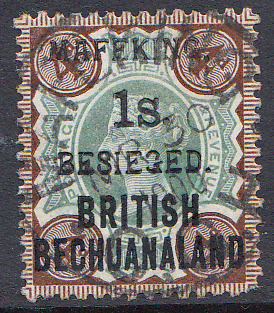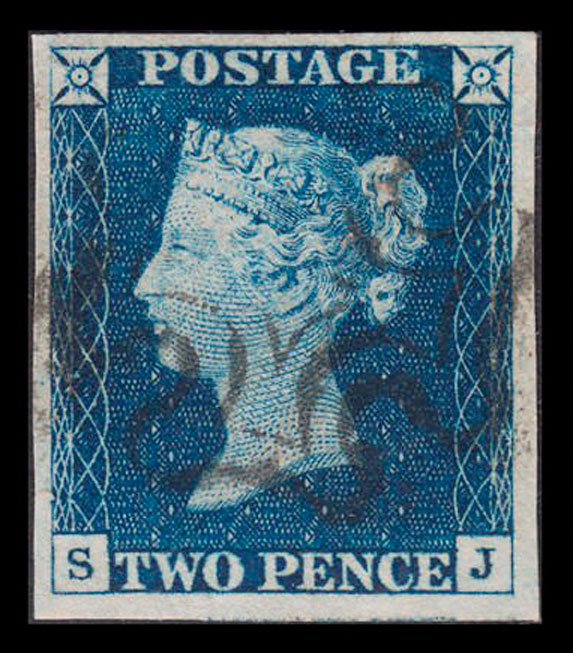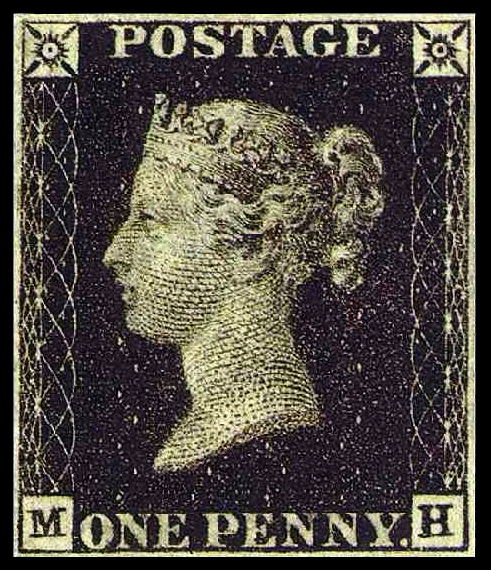
This is a transcript of an original London Philatelist article. Numbers of Mafeking Siege stamps printed are shown at the bottom.
From: The London Philatelist – The Monthly Journal of The Philatelic Society, London, Editor M.P. Castle, Vice-President of the Society, Volume X, January to December, 1901, Published by The Philatelic Society, London, Effingham House, Arundel Street, London W.C. 1901.
Baden-Powell’s Mafeking Siege Stamps,*
OFFICIAL DETAILS
At the fortnightly meeting of the Junior London Philatelic Society, held in Clapham Hall on 12th January, the President (Mr. Fred J. Melville) read to the members a statement which he had received in reply to inquiries addressed by him to Major-General Baden-Powell on the subject of the postage stamps issued during the siege of Mafeking.
The President’s letter was referred by the gallant officer to the authorities of the General Post Office at Cape Town, whose communication in answer contains many particulars hitherto unpublished, corrects some erroneous statements which have got abroad, and will guide Philatelists and dealers in avoiding forgeries when acquiring philatelic memorials of the historic siege and defense of the now famous little town in Bechuanaland. The memorandum is in the following terms :—
“POSTAGE STAMPS OVERPRINTED V.R.I. AND REISSUED AT MAFEKING DURING
THE SIEGE.
“After careful inquiry into the matter, the following would appear to be the facts, so far as can be ascertained, in connection with the overprinting, surcharging, and reissue of the stamps now known as Mafeking siege stamps, a complete list of which, showing the number of each denomination issued, is appended.
“Shortly before the 23rd of March, 1900, it was found possible to forward dispatches by runners from Mafeking, both by the north and south routes, and a service was accordingly established by the military authorities. Owing to the high amounts which had to be paid to the runners, it was decided to charge special rates for any private letters conveyed, and the following tariff was adopted, viz.:—
“Via the north, 1s. per ½ oz.
“Via the south, 6d. per ½ oz.
“From a statement made by the military authorities it would appear that, in order to provide a sufficiency of stamps to admit of the prepayment of private letters, it was further decided to surcharge all the unsold stamps in the possession of the local postmaster; and Lieutenant-Colonel Lord Edward Cecil, under whose super vision the Post Office was carried on during the siege, accordingly purchased the stamps at their face value, and caused them to be overprinted and surcharged at the works of Messrs. Townshend and Son, the publishers of the Mafeking Mail newspaper. On the 23rd of March the stamps as overprinted were issued for the first time at their enhanced values, and it is understood that the whole of the over printed issues had been disposed of before the relief of the town was effected.
“Owing to the interruption of communication the postal authorities at Cape Town could not be consulted in the matter, either as regards the sale or the over printing, and from the time the stamps originally passed out of the hands of the civil postmaster the Colonial Post Office Department ceased to have any control whatsoever over their treatment. In view of these circumstances, and of the fact that the whole of the additional revenue derived from the sale of the stamps at their surcharged value was retained by the military authorities, the postal administration of the Cape Colony and the Bechuanaland Protectorate have decided to regard the stamps in question as purely military issues, and (in the month of November last) official notices have consequently been published in the Government Gazette proclaiming their non-availability for the prepayment of mail matter posted either in Cape Colony or in the Protectorate.
“The average number of letters per week forwarded via the north from the 23rd of March was approximately sixty, a runner leaving Mafeking twice per week; and via the south thirty, once per week. It is, however, more than probable that many of the runners were captured by the Boer forces, and that the letters being conveyed by them never reached a British post office.
“The local stamps—viz. those actually manufactured in Mafeking, and bearing representations of the bust of Major-General Baden-Powell and of Sergeant-Major Goodyear, of the Cadet Corps, on a bicycle—were used entirely for a postal service which was arranged within the town and between the various outposts. The whole of the three varieties of these stamps were printed by means of photography, the photograph being taken by Dr. D. Taylor, and the gumming and perforating by Messrs. Townshend and Son. The two varieties of the Baden-Powell pattern were designed by Captain Greener, the Chief Paymaster; whilst the one of the bicycle pattern was designed by Dr. W. A. Hayes.
“It is evident from specimens which have been submitted to the Postmaster General at Cape Town that extensive forgeries of the overprinted stamps have taken place, the fraud consisting in the unofficial overprinting, surcharging, and in many cases date-stamping of genuine Cape Colony stamps.
“GENERAL POST OFFICE, CAPE TOWN,
“7th December, 1900.
“LIST OF POSTAGE STAMPS ISSUED BY THE MILITARY AUTHORITIES AT MAFEKING DURING THE SIEGE
-½d. Cape of Good Hope (old design), overprinted and surcharged “Mafeking 1d. Besieged”-7,680
-½d. Cape of Good Hope (new design), overprinted and surcharged “Mafeking 1d. Besieged “-5,280
-½d. Great Britain, overprinted “Bechuanaland Protectorate,” surcharged and overprinted “Mafeking 1d.Besieged ”-6,000
-1d. Great Britain, overprinted “Bechuanaland Protectorate” and “Mafeking 3d. Besieged”-1,800
-1d. Great Britain, overprinted “Bechuanaland Protectorate” and “Mafeking 3d. Besieged” (Smaller type)-1,800
-1d. Cape of Good Hope, overprinted and surcharged “Mafeking 3d. Besieged”-6,000
-2d. Great Britain, overprinted “Bechuanaland Protectorate” and “Mafeking 6d. Besieged”-1,200
-2d. Great Britain, overprinted “Bechuanaland Protectorate” and “Mafeking 6d. Besieged” (Smaller type)-1,200
-3d. Cape of Good Hope, overprinted “Mafeking 6d. Besieged”-840
-3d. British Bechuanaland (lilac series), overprinted “Mafeking 6d. Besieged”-3,600
-3d. Great Britain, overprinted “Bechuanaland Protectorate” and “Mafeking 6d. Besieged”-1,440
-4d. Great Britain, overprinted “British Bechuanaland” and “Mafeking 1s. Besieged” 2,320
-4d. Cape of Good Hope, overprinted “Mafeking 1s. Besieged”-1,440
-6d. Great Britain, overprinted “Bechuanaland Protectorate” and “Mafeking 1s. Besieged”- 240
-6d. Great Britain, overprinted “British Bechuanaland” and “Mafeking 1s. Besieged” 1,440
-1s. Great Britain, overprinted “British Bechuanaland” and “Mafeking 2s. Besieged”- 570
-3d. Local postage stamp, with photograph of Lieutenant-General Baden Powell’s bust. (Small size)-6,072
-3d. Local postage stamp, with photograph of Lieutenant-General Baden Powell’s bust. (Large size)-3,036
-1d. Local postage stamp, with photograph of Sergeant-Major Goodyear on bicycle 9.476
*”We are indebted to Mr. Fred. J. Melville, President of the Junior London Philatelic Society for this interesting information. —ED.”
Credit: “Baden-Powell’s Mafeking Siege Stamps” first published in The London Philatelist, Vol 10, Issue January 1901, No. 109, pp 12 – 14.



